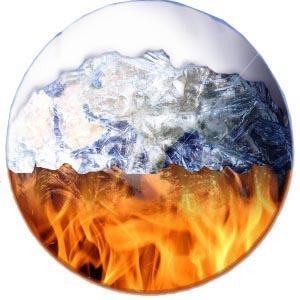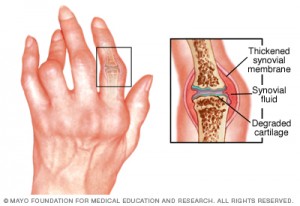Is Ice The Enemy When Treating Injuries?
At HolliBalance Well-being Center, we’ve had many patients with various pain conditions tell us that they often use ice on the pain area as instructed by their orthopedic doctors or physical therapists. They are instructed to do so especially after doing exercises that involve the affected area. Some of them say that they do feel that ice help the area temporarily. Some of them never tried using heat for their pain because they were never instructed to do so and they thought heat would make the inflammation worse. After their visits at HolliBalance Well-being Center, they started using heat or combining heat and herbal pain spray and they feel that heat lessens the pain a lot more than ice. Some of the patients also pointed out that after using ice, they were still feeling extensive pain at night while sleeping and that the pain diminished after they used heat. These claims are not surprising because Chinese Medicine has been advising against the use of ice on injuries for centuries.
A common point of argument between Chinese and Western medicine is whether ice is a good form of treatment for an injury. Commonly, when someone suffers an injury, whether the pain is acute or chronic, the first advice that is given is to apply ice to the area of pain because ice reduces swelling. Practitioners of Chinese medicine recommend that patients only use ice right after the injury happens. After forty-eight hours, it’s better to use heat, even for acute injuries. In general, heat increases circulation whilst ice does the opposite, slowing down movement and slowing down circulation.
In Western medicine, the method most commonly used to heal injuries is referred to as “RICE” which stands for Rest, Ice, Compression and Elevation. This prevents further damage to the injured area. Ice is used because it contracts the blood vessels in the local area, therefore reducing swelling. It further reduces the heat sensation from inflammation. In Chinese medicine, ice is not often used; it’s considered to slow down the healing speed of injuries because it freezes and congeals the fluids that cause swelling which prevents them from moving away from the inflamed area in order to achieve the long-term healing. After the initial acute phase, putting an ice compress on an injury isn’t the answer in Chinese medicine because it temporarily numbs the area and stops the blood from flowing which causes stagnation of the blood on and around the injured area. Western and Chinese medicine disagree strongly on the use and effects of ice. For example, in the case of an acute injury that leads to a lot of swelling the Western response is to try to numb the pain rather than try to heal the injury. In the example of an ankle sprain, following western medicine’s advice and icing the injured ankle won’t help the ankle heal in the process. This means that applying ice on soft tissue injuries is indeed efficient for short-term numbing but offers very little assistance to actually helping heal the area. In Chinese medicine, the advice given is to use heat as soon as the swelling calms down and the fluid is no longer being produced around then injured area. Another advice is to undergo acupuncture and/or use herbal spray which will offer the patient a long-term alternative. Personally, after having gotten an ankle sprain I used ice and noticed no difference besides numbness for a few minutes. Whereas using herbal spray and heat allowed the pain to partly fade away and I was able to walk the next day without feeling nearly as much pain.
ankle heal in the process. This means that applying ice on soft tissue injuries is indeed efficient for short-term numbing but offers very little assistance to actually helping heal the area. In Chinese medicine, the advice given is to use heat as soon as the swelling calms down and the fluid is no longer being produced around then injured area. Another advice is to undergo acupuncture and/or use herbal spray which will offer the patient a long-term alternative. Personally, after having gotten an ankle sprain I used ice and noticed no difference besides numbness for a few minutes. Whereas using herbal spray and heat allowed the pain to partly fade away and I was able to walk the next day without feeling nearly as much pain.
When someone gets an injury that begins to swell, it means that soft tissues are damaged and blood from the burst capillaries leaked out under the skin which caused the area to swell. Post-injury, blood vessels that deliver nutrients and oxygen to the cells are damaged and when all the oxygen is consumed, the cells die. Then, blood cells and fluid leak around the muscle and as dead cells accumulate, swelling occurs. When we apply ice, it reduces swelling because it lowers the temperature of the injured tissue through heat exchange which causes the blood vessels to shrink. Shrunk blood vessels accumulate blood and fluids in the area which adds to the pain. Ice numbs nerve endings, limiting the transfer of impulses to the brain that register as pain. Thus, ice never heals an injury; all it does is temporarily numb the pain.Some people believe that they have to avoid external warmth when having inflammation which is false. Your body uses the external heat to help repair damaged tissues. For example, stepping into a sauna or steam room allows for better circulation which helps with the process of damaged tissues. Heat is beneficial in the topical treatment of inflammation and chronic pain. However, there is an exception to this rule. It’s important to keep in mind that when getting rheumatoid arthritis, an inflammatory disorder that typically affects the small joints in your hands and feet, it’s better to put off using heat. Unlike any other injury, rheumatoid arthritis affects the lining of your joints which can lead to bone erosion. Whilst there’s no common treatment for it, there are a few medicines given to reduce the inflammation level but doctors tell their patients not to apply ice or heat on it. Whilst it’s believed that 90% of injury cases are better off using heat, people should test both to see which one is more suitable for them and which one gives them a better pain relief effect.

A common belief among Chinese medicine practitioners is that the earlier an injury is treated, the fewer problems the person will experience later on. Traditional Chinese Medicine believes that the most important factor in the healing process of injuries is the free flow of circulation. In order to quickly restore strength, mobility and flexibility of joints, the smooth and continuous flow of Qi and blood levels must be maintained balanced in order to heal swiftly. Qi and blood are both important concepts involved in the healing process. Blood ensures that we have plenty of nourishment and moisture throughout our whole body and it lubricates our joints which allows us to perform smooth movements. Qi is the force behind all our movements. It moves blood, fluids and nutrients throughout our body and nourishes our organs and tissues. They are mutually dependent; the organs that produce the Qi force depend on the nourishment of the blood whilst blood can’t move without Qi.
This all means that ice is not a form of treatment of injuries but rather a relief method to make the injured person temporarily numb to the pain they are feeling. But in the long term aspect, ice will not help heal an injury so it’s important to keep in mind that there are only a few assured methods of healing and to try them as early as possible rather than to apply ice to the injury in hopes of recovery.